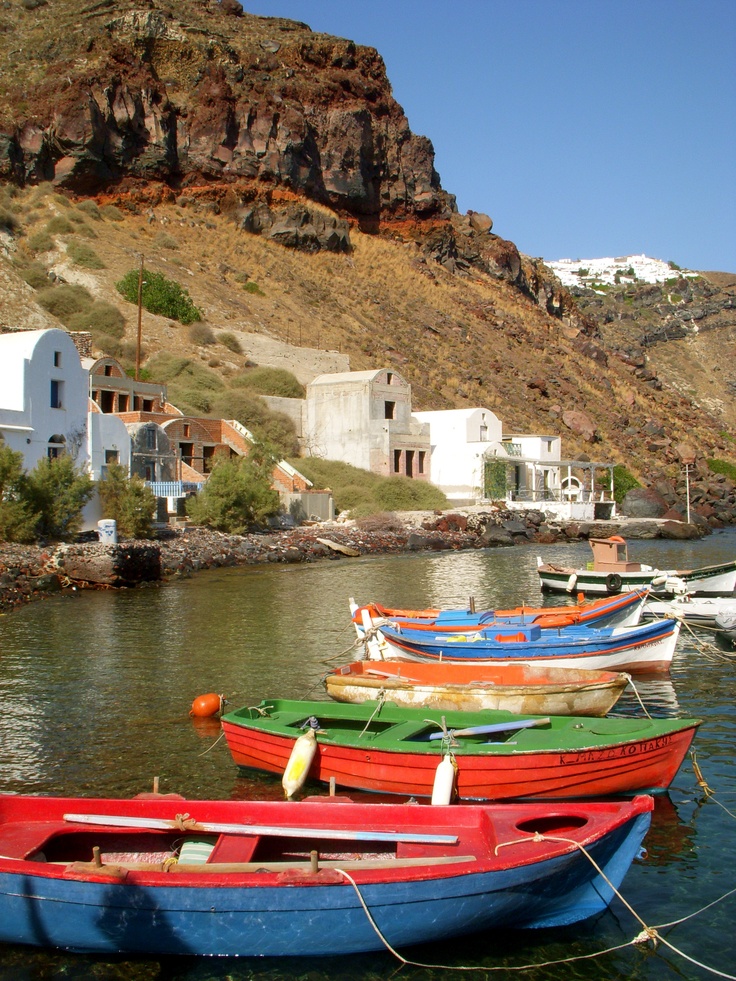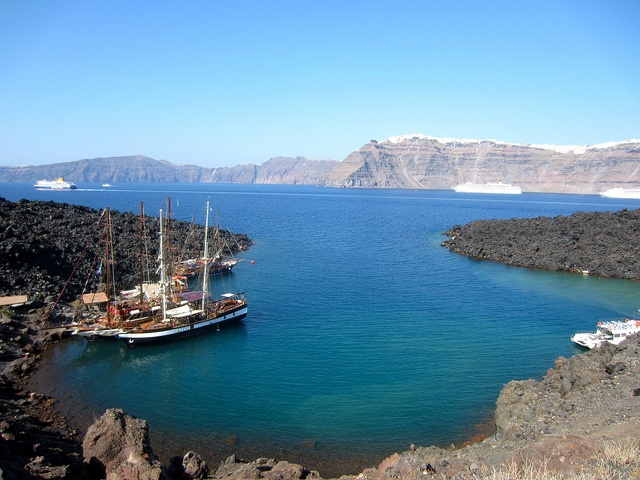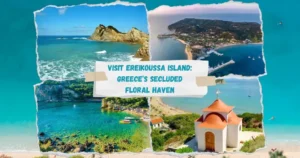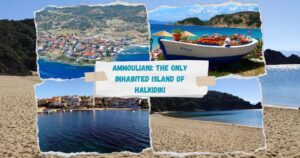Thirasia: A Journey Back to 1960s Santorini Life
In a world where the Greek islands have become synonymous with whitewashed houses, luxury infinity pools, and crowded alleys overflowing with selfie sticks, there remains a forgotten gem that feels like a portal to the past. Just a 10-minute boat ride from Santorini lies Thirasia, a tranquil island that seems suspended in time, quietly preserving the charm and authenticity of the Cyclades as they were decades ago.
While Santorini continues to pulse with a glamorous, cosmopolitan vibe, Thirasia offers an unfiltered, slow-living escape—a glimpse into the simpler lifestyle of the 1960s, before mass tourism reshaped the face of the Aegean. Here, travelers won’t find beach clubs or rooftop cocktail bars. Instead, they’ll encounter fishermen mending nets on sun-drenched piers, donkeys ambling up ancient footpaths, and old women sweeping their doorsteps while exchanging gossip in hushed tones. This is not just a destination—it’s a time capsule.
A Slice of Authentic Cycladic Life
What sets Thirasia apart isn’t just its lack of development, but its conscious refusal to change. The island’s tiny population—less than 300 people—mostly lives in two villages: Manolas, perched dramatically on a cliff with panoramic views of Santorini, and Potamos, tucked further inland and even quieter still. Walking through Manolas, visitors are immediately struck by the silence. There’s no hum of traffic, no buzz of commercialism. Stone pathways wind through low-built homes with peeling pastel doors, and small chapels dot the landscape like quiet sentinels. It’s not unusual to find grapevines growing across rooftops or goats casually lounging beside sun-bleached walls. The pace here is so gentle that you can hear the wind as it moves through olive trees or the call of a rooster echoing from the hills. It’s an experience so rich in texture and mood that you feel as if you’ve stepped into a faded photograph from the 60s.
No-Frills Travel, Real Rewards
Getting to Thirasia is refreshingly easy yet feels like a secret mission. Small ferries, often run by locals, leave from Ammoudi Bay or Athinios port in Santorini and arrive at Riva, the island’s port. From there, you can either hike up the steep trail to Manolas or ride one of the resident donkeys, a tradition that’s slowly disappearing but still maintained out of love and legacy. There’s no public transport on the island, no car rentals, and very few accommodations—mostly simple guesthouses or family-run studios. But this scarcity is what keeps Thirasia so pure. You won’t find Instagrammable brunches or infinity pools here, but you will wake up to the sound of waves and eat tomatoes that actually taste like tomatoes. Meals are a highlight on Thirasia, not because of fine dining, but due to their honesty. Try grilled octopus at the waterfront taverna in Riva or fresh fava with olive oil and lemon in a small eatery in Potamos. Meals here cost around €10–15 and are typically made with ingredients grown or caught just hours earlier. The island’s remoteness means supply chains are short and freshness is a necessity, not a trend.
Life Unfiltered and Unhurried
Time stretches on Thirasia. With no major sights or tourist attractions, the island invites you to simply be. Take a walk along the cliffside paths during the golden hour, when the light softens and the sea glows like molten glass. Climb the hills around Agrilia, an abandoned village that whispers stories of those who left in search of modern lives elsewhere. Visit Panagia Church with its panoramic views and imagine life here in the era before electricity and high-speed ferries. There’s a raw beauty to the land—untamed wildflowers, dry stone terraces, and scattered fig trees. Locals might wave as you pass or offer a ripe fruit from their garden without a word. Evenings are particularly magical. As the sun dips behind Santorini’s volcanic ridge, the light turns amber, then crimson. There’s usually no one around except for maybe a curious cat or the echo of distant bells. It’s easy to see why artists and poets are drawn here—everything feels like it belongs in a novel, untouched by commercial intent.
Not for Everyone—and That’s the Point
Thirasia isn’t for those seeking nightlife, convenience, or luxury. There are no ATMs, Wi-Fi is spotty at best, and shops close when they want to. But for travelers craving something genuine—something human—it’s perfect. It invites visitors to unplug not just from devices but from expectations. Without distractions, people tend to connect more—with the land, with themselves, and with the islanders. Conversations are longer, laughter louder, meals slower. Even if you’re just visiting for a day, the effect lingers. Many say they arrive with a tightness in their chest and leave breathing deeper. That’s the power of Thirasia. It doesn’t entertain—it heals.
What to Know Before You Go
If you’re planning to visit Thirasia, pack light but smart. Bring comfortable walking shoes, as most of your exploring will be done on foot. A sunhat, water bottle, and a good book are more useful here than any gadget. Clothing should be modest and functional—think breathable fabrics and neutral tones to blend with the environment. There’s no need for anything flashy, and in fact, wearing designer anything here would feel oddly out of place. There’s no entrance fee to visit Thirasia, but do bring cash since many places don’t accept cards. If you’re staying overnight, expect to pay around €40–60 for a basic double room in a guesthouse. Food is affordable and generous. For guided experiences, you won’t find organized tours, but some locals offer storytelling walks or fishing trips if asked kindly. Respect the island’s quiet rhythm—this is not a place for loud music or drone photography. Take only photos, leave only footprints, and you’ll be warmly welcomed.
Final Thoughts: More Than a Trip—A Gentle Return
In a way, Thirasia isn’t about what you do but how you feel while doing it. It’s about watching clothes dry in the wind, hearing church bells echo down stone alleys, and falling asleep under a sky full of stars without noise pollution. It’s about realizing that beauty doesn’t need embellishment and that sometimes, the most meaningful journeys are the ones that make you slow down. For those curious enough to step off Santorini’s beaten path, Thirasia offers more than nostalgia—it offers perspective. It’s not just a destination; it’s a rare reminder that the best parts of travel aren’t always the grandest but often the simplest. A ferry ride away, yet worlds apart, Thirasia quietly waits for travelers with an open heart and a willing spirit.
Images via: Pinterest











